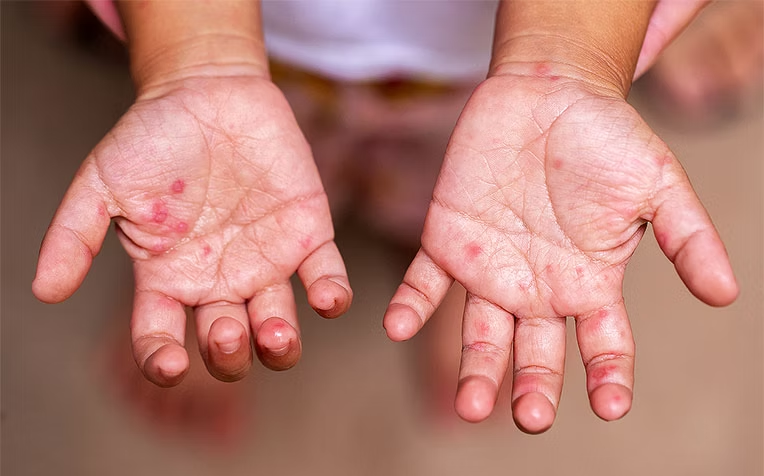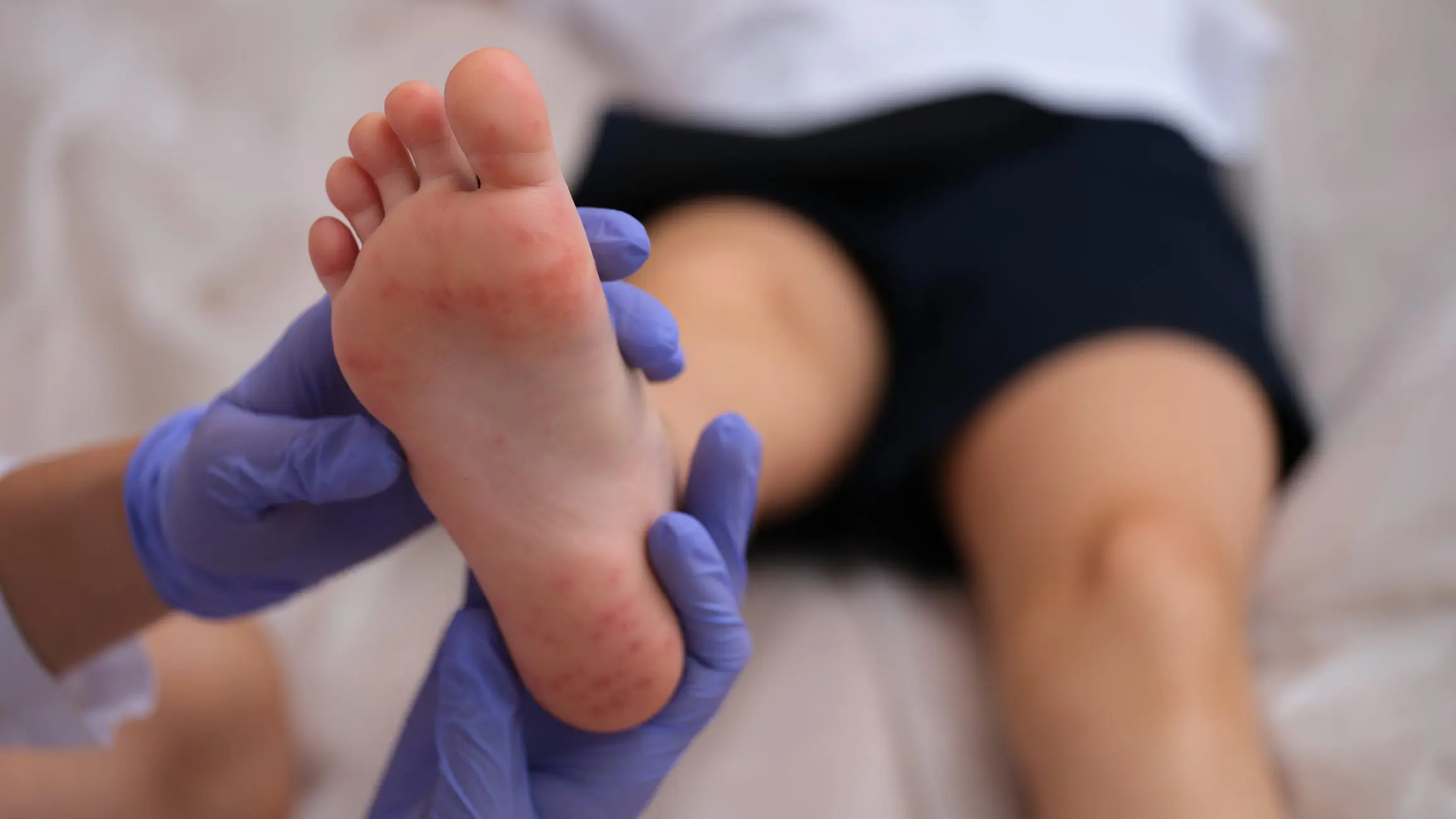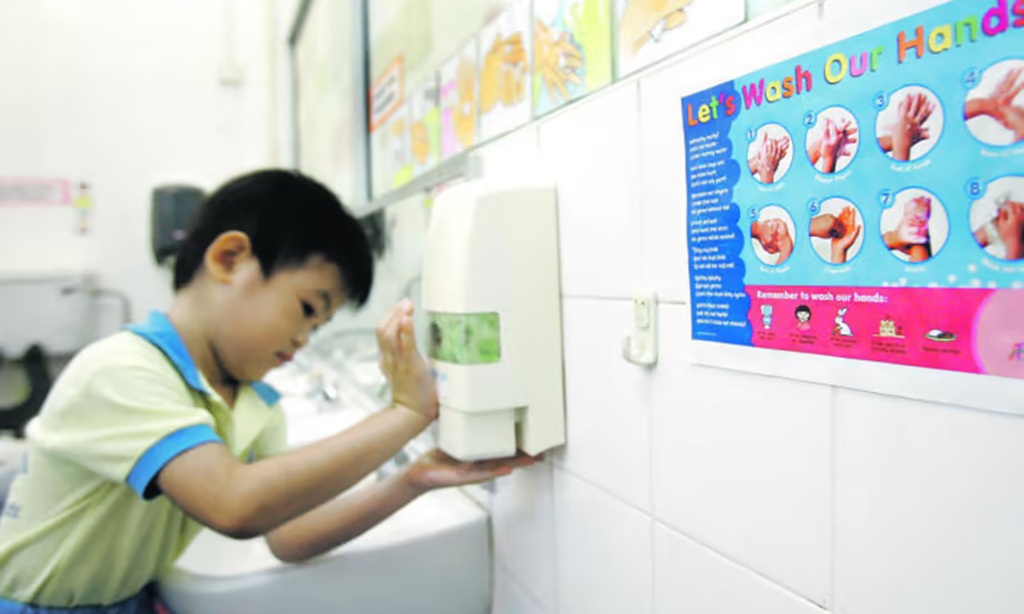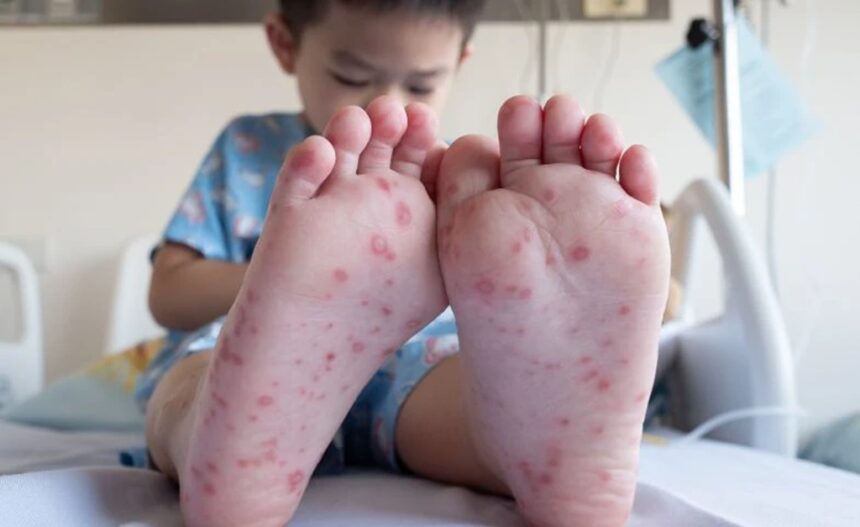BANGKOK – Thailand faces a widespread outbreak of hand, foot, and mouth disease (HFMD), a viral infection that mainly affects young children, especially those under five years old.
The Department of Disease Control (DDC), part of the Ministry of Public Health, has recorded 21,315 confirmed cases across the country between 1 January and 25 June 2025.
Rising numbers, especially in northern areas such as Chiang Rai, have led health authorities to issue urgent advice to families and caregivers. The early onset of the rainy season, combined with lower temperatures and higher humidity, has supported the spread of the virus.
The DDC reports that most cases—15,753—have occurred in children under four years old. There have been 4,658 cases in the 5 to 9 age group and 544 in those aged 10 to 14.
Bangkok has reported the highest case numbers so far, with provinces in the north, including Chiang Rai and Phayao, also strongly affected. Many outbreaks have been linked to childcare centres and schools. Information from the National Disease Surveillance (Report 506) highlights the pressure this outbreak has placed on local hospitals and early education.
The rainy season arrived earlier than normal this year and has contributed to the spike in cases. Deputy government spokesman Anukul Prueksa-anurak notes that the cooler and more humid climate is well-suited to HFMD, in line with previous patterns that show an increase in cases during June to August.
This year, the number of cases has risen sharply, with the incidence rate now much higher than the average of 20.2 cases per 100,000 people that was typical between 2007 and 2011.

How HFMD Spreads
HFMD is caused by several enteroviruses, most often coxsackievirus A16 (CV-A16) and enterovirus 71 (EV-A71), but coxsackievirus A6 (CV-A6) has also played a key role in recent outbreaks, such as the 2012 epidemic in Thailand.
The virus spreads through close contact with saliva, secretions from the nose or throat, fluids from blisters, or the faeces of someone infected. The virus can also survive on objects like toys, doorknobs and cutlery, making group settings such as schools and nurseries especially vulnerable.
People who show no symptoms, or only mild signs and do not seek healthcare, can still pass on the virus, which makes outbreaks harder to contain. Poor hygiene practices and inadequate handwashing increase the chance of spreading the infection. In areas like Chiang Rai, research shows that early childhood centres often do not meet the hygiene standards set by the DDC, which adds to the high infection rates.
HFMD Symptoms to Observe
Families and those caring for children need to look for the common signs of HFMD, which usually appear three to seven days after exposure. Typical symptoms are as follows:
- Fever: Usually mild, often lasting between two and three days.
- Mouth sores: Painful ulcers or blisters inside the mouth, especially on the soft palate, can make eating or drinking uncomfortable.
- Rash or blisters: Flat or raised spots, often with blisters, appear on the hands, feet, knees, elbows or buttocks.
- Sore throat and runny nose: These signs can come before the rash and mouth sores.
- General discomfort: Children may be tired, weak, or irritable.
In rare cases, HFMD can cause serious problems, especially with EV-A71. These include conditions like meningitis, swelling of the brain, muscle weakness, or heart and lung complications. Parents should seek medical help straight away if a child does not keep fluids down, is very sleepy, vomits frequently, or has a high fever that does not drop.

HFMD Treatment and Care
There are no specific antiviral drugs or widely available vaccines for HFMD in Thailand, although China has approved EV-A71 vaccines since 2015. Most treatment focuses on symptom relief and avoiding complications. The DDC gives the following advice:
- Hydration: Make sure children get enough fluids, as mouth ulcers may make drinking difficult.
- Pain relief: Paracetamol or ibuprofen can help reduce fever and pain. Oral lidocaine is not recommended due to possible side effects.
- Isolation: Children who are ill should not attend school or childcare while they are contagious.
- Hygiene: Regular handwashing with soap and water is important. Alcohol-based hand gels are less effective against enteroviruses. Surfaces and shared items, such as toys or utensils, should be cleaned often.
For those with severe symptoms, especially if there are neurological or heart concerns, treatments like intravenous immunoglobulin (IVIG) or mechanical ventilation may be used in the hospital. Early use of IVIG has been linked to better outcomes and fewer deaths.

Parental Advice and Prevention
The DDC recommends several steps to lower the risk of infection and limit the disease’s spread:
- Watch for symptoms: Check children daily for fevers, rashes, or mouth sores, especially during the rainy months.
- Practice hygiene: Teach children to wash their hands well and not share personal items.
- Avoid crowded spaces: Keep young children away from busy public places during outbreaks.
- Keep environments clean: Regular cleaning and disinfection of homes and child care settings is important.
- Seek medical care: Get prompt attention if a child’s symptoms get worse or do not improve.
The DDC also calls for cooperation between parents, carers, and childcare centres to keep hygiene standards high. In Chiang Rai, where cases are high, authorities are reviewing and improving local sanitation in child care to curb infections.
HFMD Public Health Response
The 2025 HFMD outbreak highlights the ongoing challenge posed by this disease in Thailand. With more than 21,000 cases already reported in the first half of the year, the DDC has stepped up surveillance and public information campaigns. Families in Chiang Rai and other affected areas are encouraged to stay alert and follow prevention advice.
For updates or support, parents can contact the DDC hotline at (+66) 2590 3963 or visit the Ministry of Public Health website at https://ddc.moph.go.th.














